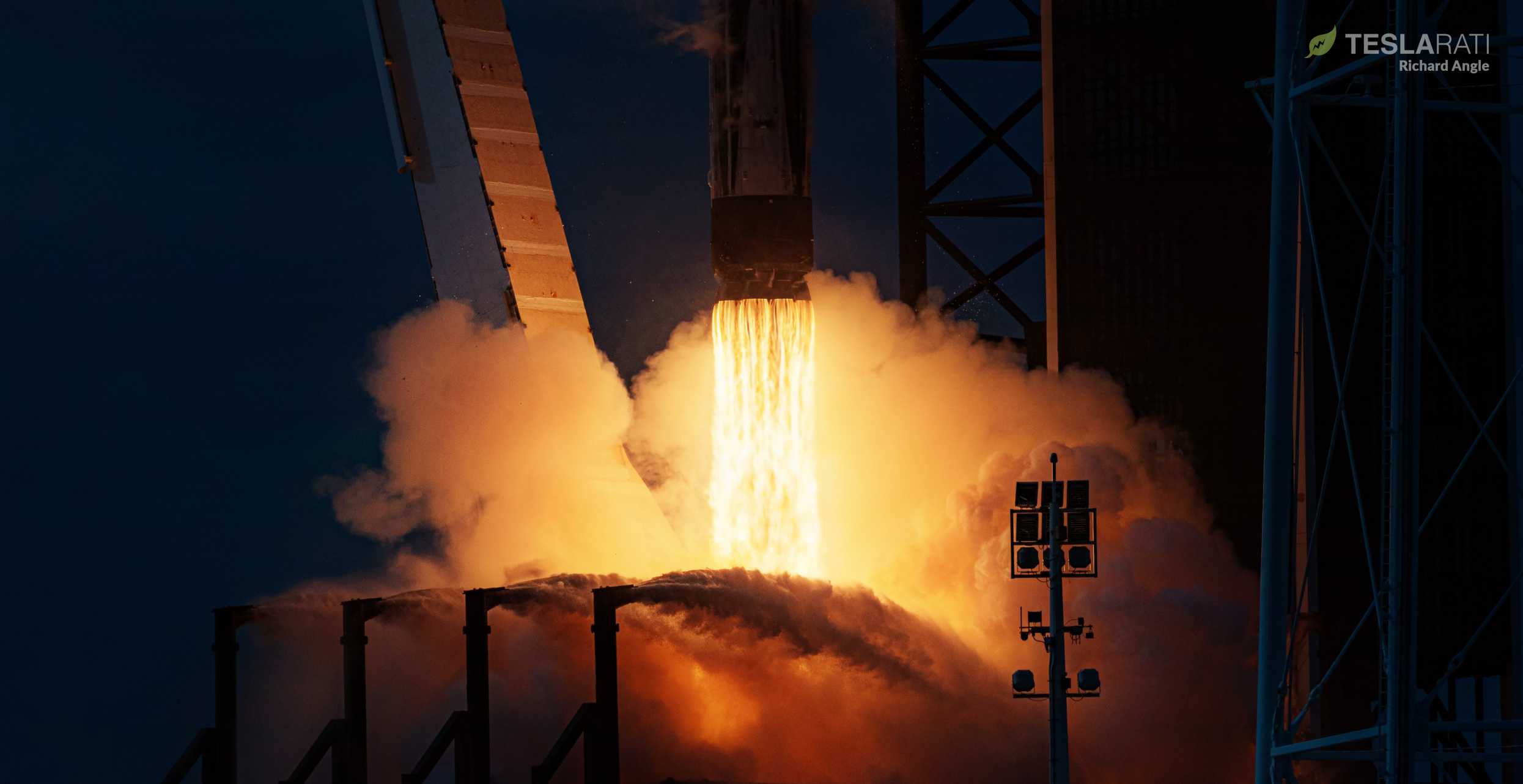

News
SpaceX’s first ever Block 5 booster gives one last hurrah, in photos
After helping SpaceX enter a new era of routine rocket reusability, the very first Falcon 9 Block 5 booster is officially nothing more than bits, pieces, and a few artificial reefs at the bottom of the Atlantic Ocean — intentionally destroyed to give SpaceX the confidence it needs to soon launch astronauts.
Captured on camera by Teslarati photographer Richard Angle, the upgraded Falcon 9 booster was able to give one last spectacular hurrah prior to its even more spectacular demise, returning fire to Kennedy Space Center (KSC) Launch Complex 39A for the first time in more than half a year. Lacking landing legs and grid fins, visible instead as comically stark outlines on the booster’s sooty exterior, Falcon 9 B1046 lifted off for the fourth and final time on January 19th, 2020.
In doing so, B1046 became the third orbital-class booster ever to fly launch four separate missions — a more than fitting end to the first in a line of upgraded Falcon 9 rockets that have brought with them major improvements in reusability and reliability. Nevertheless, a little over 90 seconds after lifting off for the fourth time, Falcon 9 B1046 – left behind after Crew Dragon successfully escaped the (simulated) failing rocket – yielded under intense off-nominal stresses, rupturing the booster’s propellant tanks and creating a vast fireball at least 300 meters (1000+ ft) in diameter.
Powered by nine Merlin 1D engines and capable of producing up to 7600 kN (1.7 million lbf) of thrust, Falcon 9 B1046 was extensively tested at SpaceX’s McGregor, Texas development facilities over a period of two or so months – unusually lengthy. The extra time was used to make sure that the first completed Block 5 booster – representing an almost clean-slate upgrade of the Falcon rocket family – was agreeing with SpaceX’s engineering models and expectations at all points.
The company likely spent several weeks or more performing numerous wet dress rehearsals (WDRs) — filling Falcon 9 B1046’s propellant tanks with liquid oxygen, refined kerosene (RP-1), helium, and nitrogen and verifying that the rocket was structurally sound and functioning smoothly. Once complete, SpaceX moved onto static fire testing, igniting the booster’s M1D engines for increasing periods of time. Finally, the company wrapped up the rocket and shipped it by road from Texas to Florida.
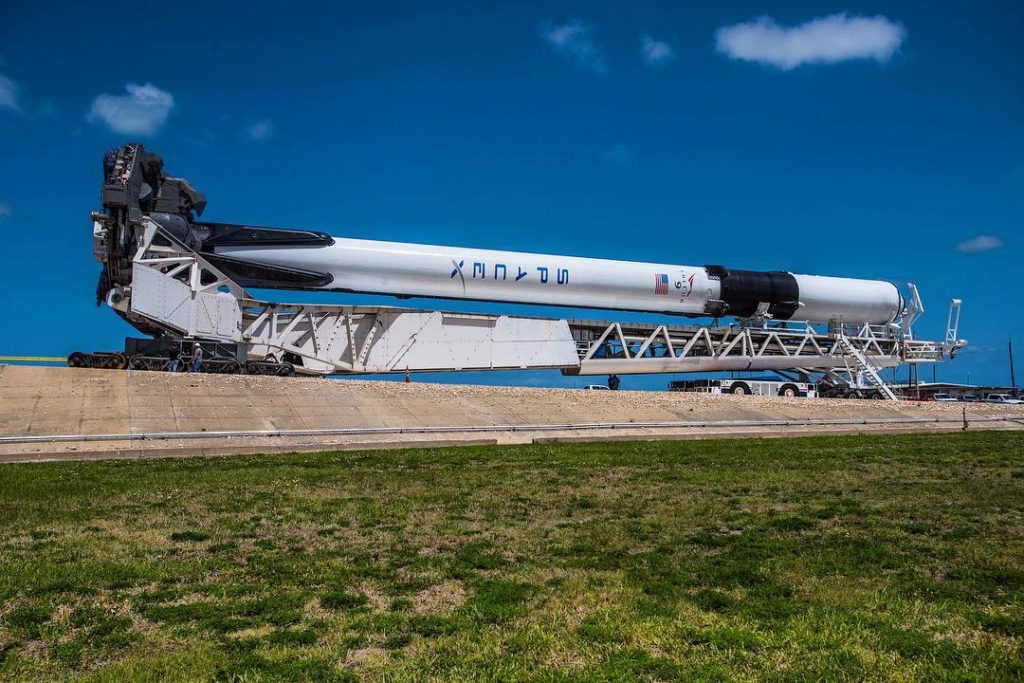
Shortly thereafter, the rocket was quickly prepared for flight and became the first Falcon 9 Block 5 booster to successfully launch and land in May 2018. Over the course of 2018, SpaceX debuted another five Block 5 boosters, while Falcon 9 B1046 became the first Block 5 booster to launch both twice and three times in August and December.
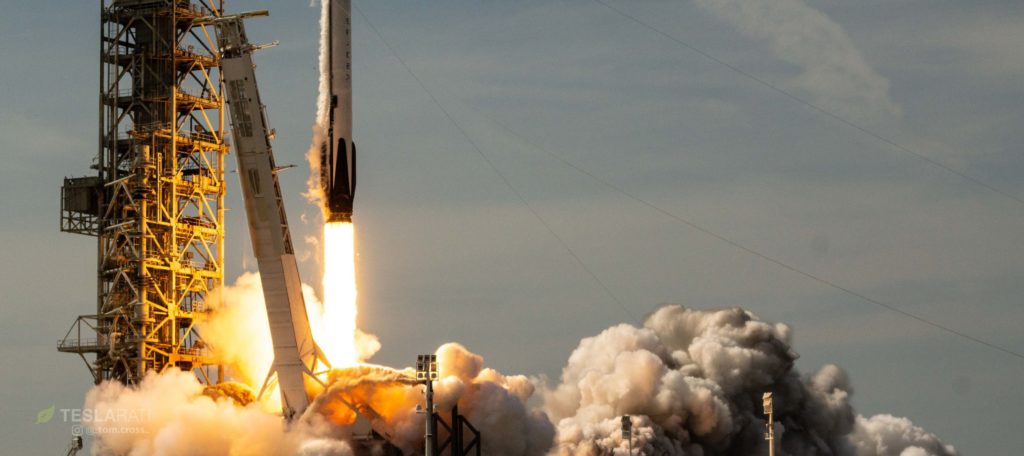
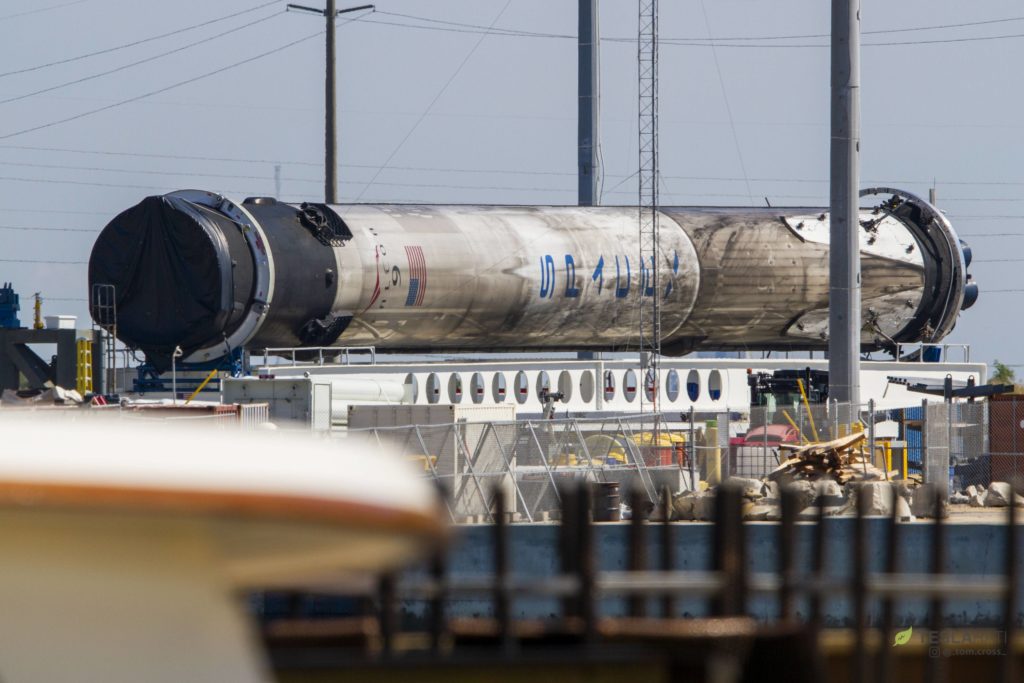
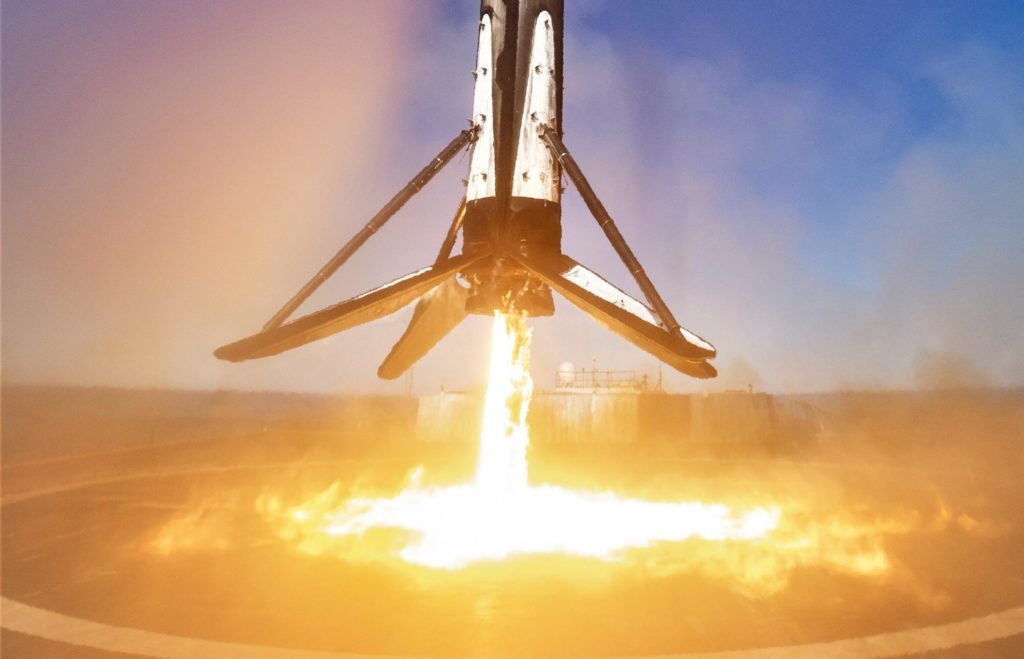
Finally, on January 19th, 2020, Falcon 9 B1046 lifted off for the fourth and last time, becoming the third SpaceX booster to do so in barely two months. Fittingly, B1046’s last launch occurred at Pad 39A, the same launch site it lifted off from for the first time back in May 2018. Carrying an expendable upper stage, Dragon trunk, and Crew Dragon capsule C205, B1046 could not have experienced a more perfect 90 or so seconds of uninterrupted flight. Interrupted, however, it would shortly thereafter become.
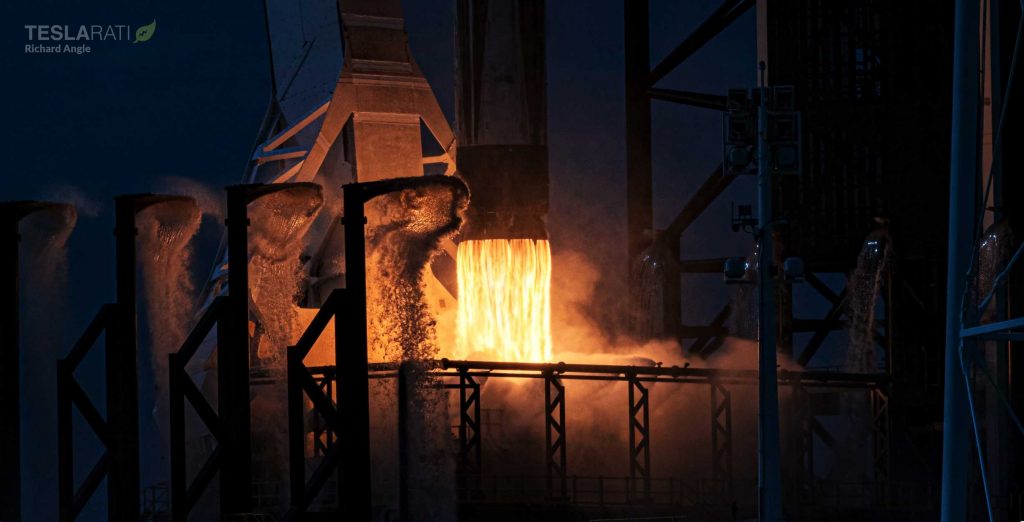
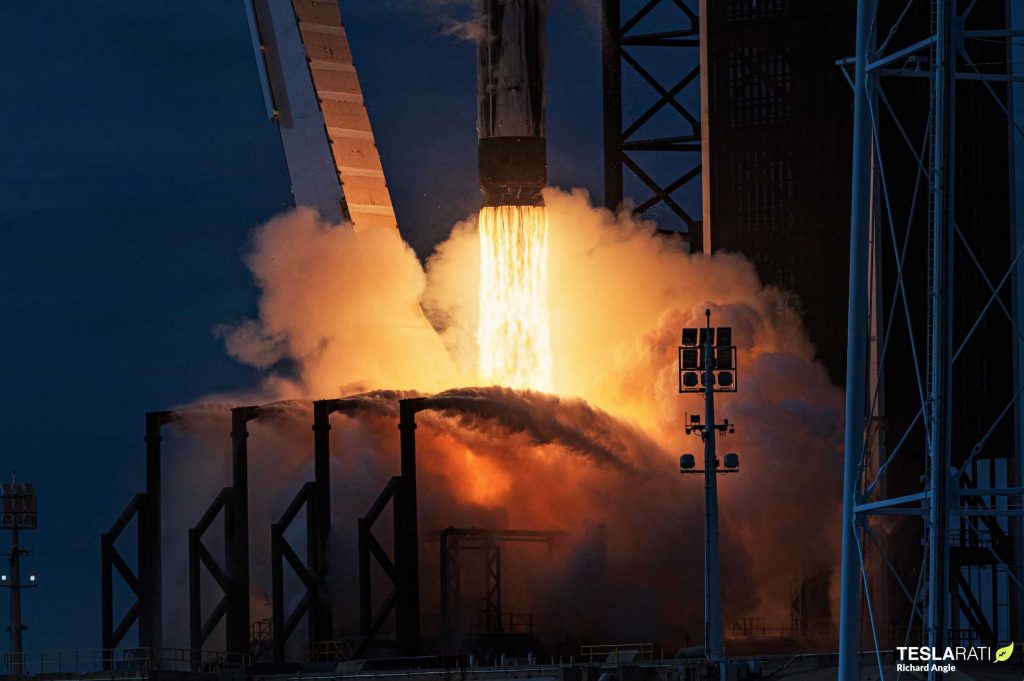
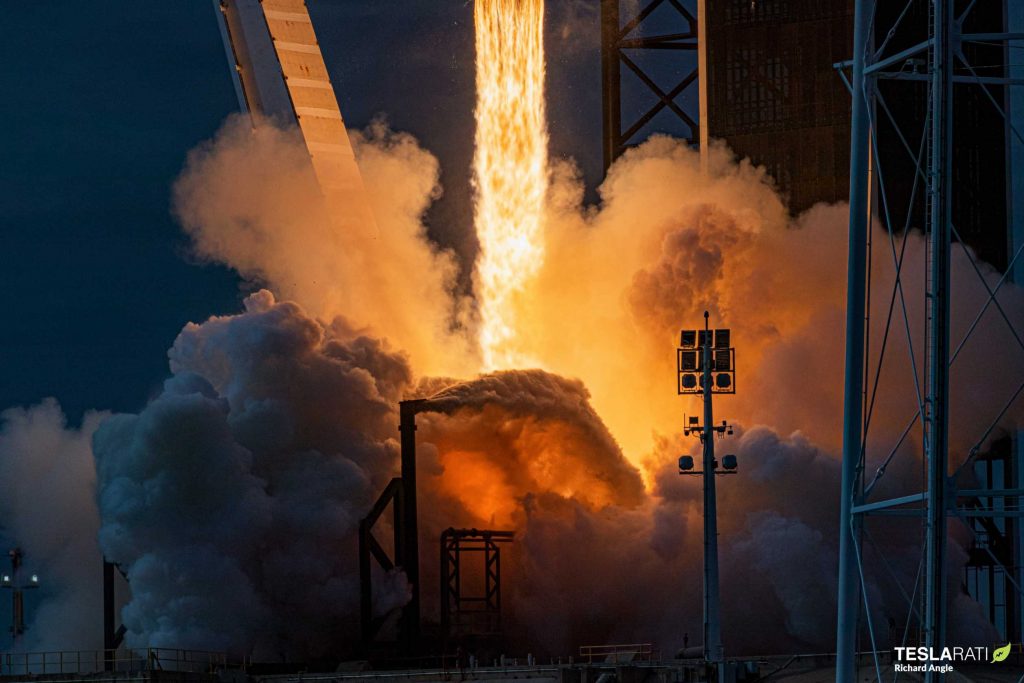
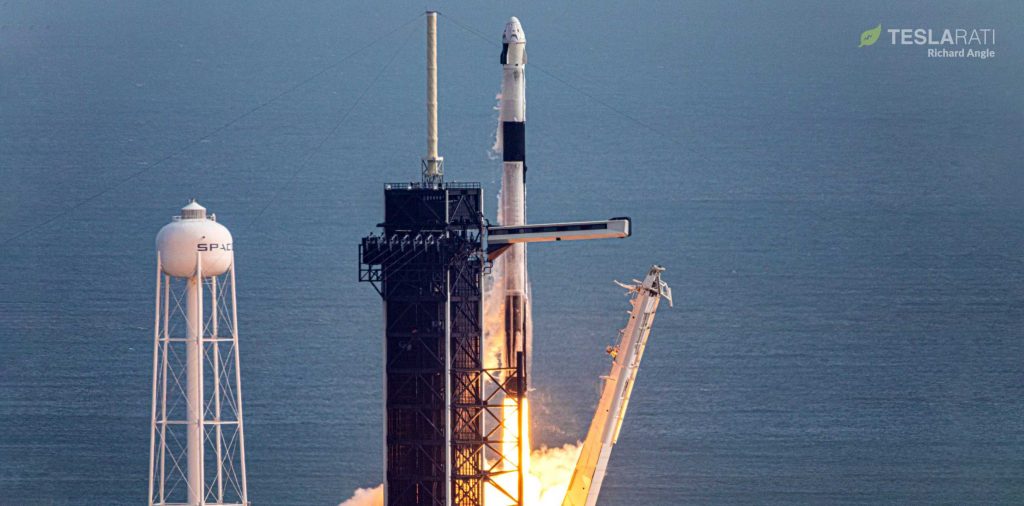
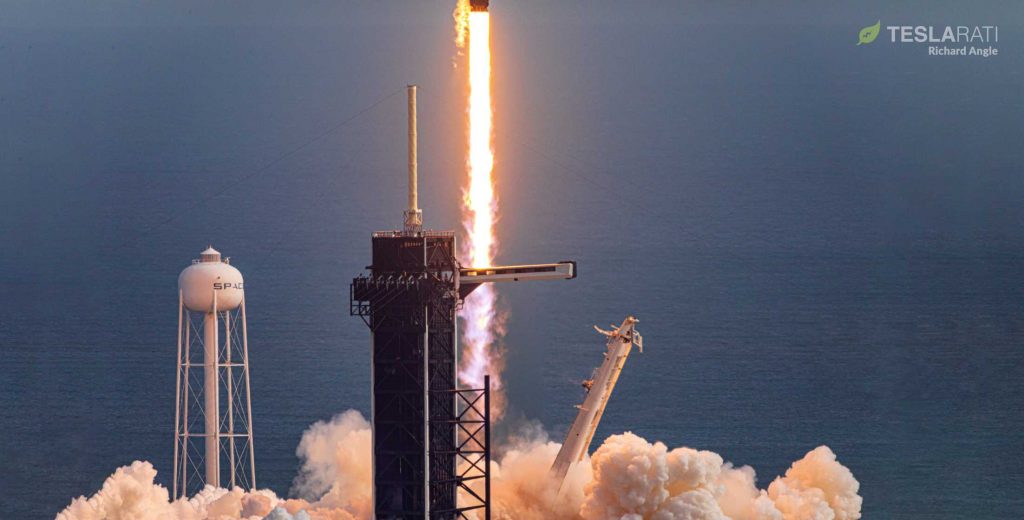
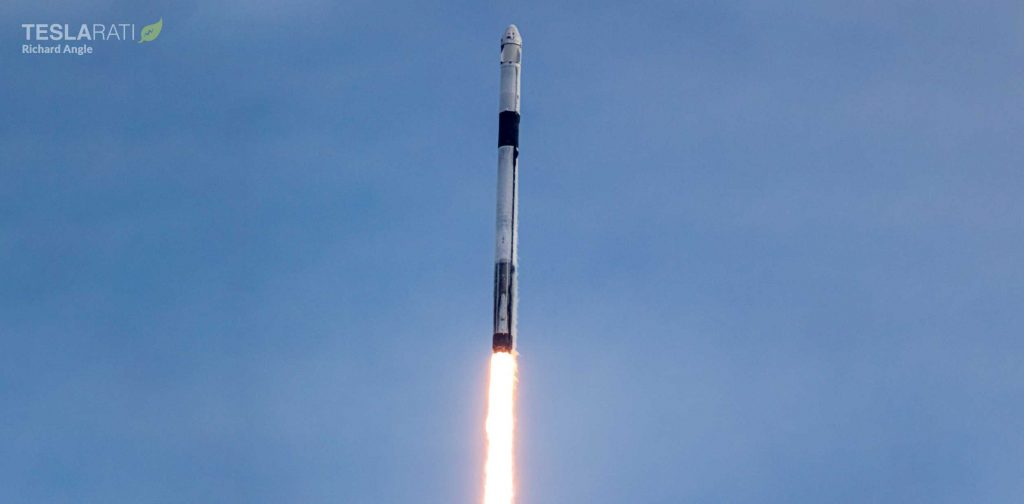
Around 85 seconds after liftoff, Falcon 9 B1046 shut off its Merlin 1D engines at the same time as Crew Dragon C205 ignited eight SuperDraco engines, briskly carrying the spacecraft several thousand feet away in just a handful of seconds. Now fully uncontrolled and rudely interrupted to a supersonic wall of air, B1046 found itself bent and contorted in ways – and under loads – it simply was not designed to survive. Seconds later, the booster’s pressurized propellant tanks were breached, releasing a rapidly dispersing cloud of fuel and oxidizer that almost instantly ignited, creating a fireball the size of several city blocks.
All things considered, not a bad way to go for a well-worn rocket.
Check out Teslarati’s Marketplace! We offer Tesla accessories, including for the Tesla Cybertruck and Tesla Model 3.

News
Tesla starts showing how FSD will change lives in Europe
Local officials tested the system on narrow country roads and were impressed by FSD’s smooth, human-like driving, with some calling the service a game-changer for everyday life in areas that are far from urban centers.

Tesla has launched Europe’s first public shuttle service using Full Self-Driving (Supervised) in the rural Eifelkreis Bitburg-Prüm region of Germany, demonstrating how the technology can restore independence and mobility for people who struggle with limited transport options.
Local officials tested the system on narrow country roads and were impressed by FSD’s smooth, human-like driving, with some calling the service a game-changer for everyday life in areas that are far from urban centers.
Officials see real impact on rural residents
Arzfeld Mayor Johannes Kuhl and District Administrator Andreas Kruppert personally tested the Tesla shuttle service. This allowed them to see just how well FSD navigated winding lanes and rural roads confidently. Kruppert said, “Autonomous driving sounds like science fiction to many, but we simply see here that it works totally well in rural regions too.” Kuhl, for his part, also noted that FSD “feels like a very experienced driver.”
The pilot complements the area’s “Citizen Bus” program, which provides on-demand rides for elderly residents who can no longer drive themselves. Tesla Europe shared a video of a demonstration of the service, highlighting how FSD gives people their freedom back, even in places where public transport is not as prevalent.
What the Ministry for Economic Affairs and Transport says
Rhineland-Palatinate’s Minister Daniela Schmitt supported the project, praising the collaboration that made this “first of its kind in Europe” possible. As per the ministry, the rural rollout for the service shows FSD’s potential beyond major cities, and it delivers tangible benefits like grocery runs, doctor visits, and social connections for isolated residents.
“Reliable and flexible mobility is especially vital in rural areas. With the launch of a shuttle service using self-driving vehicles (FSD supervised) by Tesla in the Eifelkreis Bitburg-Prüm, an innovative pilot project is now getting underway that complements local community bus services. It is the first project of its kind in Europe.
“The result is a real gain for rural mobility: greater accessibility, more flexibility and tangible benefits for everyday life. A strong signal for innovation, cooperation and future-oriented mobility beyond urban centers,” the ministry wrote in a LinkedIn post.
News
Tesla China quietly posts Robotaxi-related job listing
Tesla China is currently seeking a Low Voltage Electrical Engineer to work on circuit board design for the company’s autonomous vehicles.

Tesla has posted a new job listing in Shanghai explicitly tied to its Robotaxi program, fueling speculation that the company is preparing to launch its dedicated autonomous ride-hailing service in China.
As noted in the listing, Tesla China is currently seeking a Low Voltage Electrical Engineer to work on circuit board design for the company’s autonomous vehicles.
Robotaxi-specific role
The listing, which was shared on social media platform X by industry watcher @tslaming, suggested that Tesla China is looking to fill the role urgently. The job listing itself specifically mentions that the person hired for the role will be working on the Low Voltage Hardware team, which would design the circuit boards that would serve as the nervous system of the Robotaxi.
Key tasks for the role, as indicated in the job listing, include collaboration with PCB layout, firmware, mechanical, program management, and validation teams, among other responsibilities. The role is based in Shanghai.
China Robotaxi launch
China represents a massive potential market for robotaxis, with its dense urban centers and supportive policies in select cities. Tesla has limited permission to roll out FSD in the country, though despite this, its vehicles have been hailed as among the best in the market when it comes to autonomous features. So far, at least, it appears that China supports Tesla’s FSD and Robotaxi rollout.
This was hinted at in November, when Tesla brought the Cybercab to the 8th China International Import Expo (CIIE) in Shanghai, marking the first time that the autonomous two-seater was brought to the Asia-Pacific region. The vehicle, despite not having a release date in China, received a significant amount of interest among the event’s attendees.
Elon Musk
Elon Musk and Tesla AI Director share insights after empty driver seat Robotaxi rides
The executives’ unoccupied tests hint at the rapid progress of Tesla’s unsupervised Robotaxi efforts.

Tesla CEO Elon Musk and AI Director Ashok Elluswamy celebrated Christmas Eve by sharing personal experiences with Robotaxi vehicles that had no safety monitor or occupant in the driver’s seat. Musk described the system’s “perfect driving” around Austin, while Elluswamy posted video from the back seat, calling it “an amazing experience.”
The executives’ unoccupied tests hint at the rapid progress of Tesla’s unsupervised Robotaxi efforts.
Elon and Ashok’s firsthand Robotaxi insights
Prior to Musk and the Tesla AI Director’s posts, sightings of unmanned Teslas navigating public roads were widely shared on social media. One such vehicle was spotted in Austin, Texas, which Elon Musk acknowleged by stating that “Testing is underway with no occupants in the car.”
Based on his Christmas Eve post, Musk seemed to have tested an unmanned Tesla himself. “A Tesla with no safety monitor in the car and me sitting in the passenger seat took me all around Austin on Sunday with perfect driving,” Musk wrote in his post.
Elluswamy responded with a 2-minute video showing himself in the rear of an unmanned Tesla. The video featured the vehicle’s empty front seats, as well as its smooth handling through real-world traffic. He captioned his video with the words, “It’s an amazing experience!”
Towards Unsupervised operations
During an xAI Hackathon earlier this month, Elon Musk mentioned that Tesla owed be removing Safety Monitors from its Robotaxis in Austin in just three weeks. “Unsupervised is pretty much solved at this point. So there will be Tesla Robotaxis operating in Austin with no one in them. Not even anyone in the passenger seat in about three weeks,” he said. Musk echoed similar estimates at the 2025 Annual Shareholder Meeting and the Q3 2025 earnings call.
Considering the insights that were posted Musk and Elluswamy, it does appear that Tesla is working hard towards operating its Robotaxis with no safety monitors. This is quite impressive considering that the service was launched just earlier this year.








